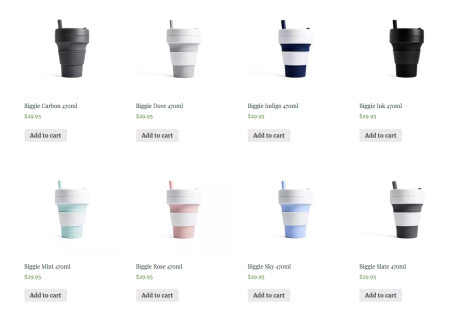The dead spot. It consumes the seat on the far left side of the kitchen counter top. Connection is limited, almost impossible to be active online. It only takes a mere moment for the seat to be empty. Efficiency is essential when running a small business from home, thus my Mum and I continue to avoid the ‘dead spot’ and try to plant ourselves in the most favourable position within the house, right next to the modem.
As of April this year, when my Mum and I decided to start up a small online business ‘Organised With Design (OWD)’, my morning routine has been dominated by my laptop and smartphone. It is through the evolution of domestic broadband that technology has become integrated into the everyday, with this producing high expectations of fast and reliable connection (Bausinger 1984, p. 344). The multiplication of individually owned media has fostered a shift to individualised media lifestyles within one’s everyday routine (Livingstone 2007).
From 7:00am on a Monday morning I have logged into all accounts; Instagram, Pinterest and OWD’s website. In one hand I have my phone, scrolling through Instagram to check our progress and in the other I am editing content to ensure it is ready to be uploaded by the time my Mum and I leave for work and University. My mum is also busily working on the back end of the website and our accounts, ensuring all orders have been processed and are ready to be sent out that day.
Below is a timeline displaying an internet morning routine from four devices within the space of two hours.

7:00am – Opens Instagram, Online Website & Pinterest (Mobile)

7:10am – Checks Likes/ Comments/ Instant Messages (Mobile)

7:20am – Reviews Stock on OWD’s Website (Laptop)

7:35am – Updates to OWD Instagram Shop Feed (Laptop)

8:00am – Editing Pictures to Upload onto Instagram and Pinterest (Mobile)

8:15am – Creates Captions for Upcoming Posts (Mobile)

8:35am – Quickly Makes Breakfast
9:00am – Closes all Internet Tabs Opened on Laptops
(Ritchie 2018)
The following log indicates that nearly 2 full hours was spent online, in this case, working to ensure OWD is fully operational. It is not only millennial’s, but rather an increase in Gen X’s spending more time using the internet of a morning, rather than focusing on getting ready for work, eating breakfast or completing household tasks (Davies 2015).
Despite the rise of privatised spaces, whereby in this instance my Mum and I were working in our own ‘bubbles’, I believe technologies are enablers of efficient work practices. Whilst digitalised technologies have enabled my Mum and I to connect and curate content for our customers, they have also allowed us to develop closer bonds with each other (Villegas 2013).
According to Wellman et. al., “…The developing personalisation, wireless portability, and ubiquitous connectivity of the internet all facilitate individualised networking as the basis of community” (2002, p. 12). Over the past few months, my Mum and I have started to foster an online community for OWD, through facilitating and encouraging communication and customer-to-customer interactions. At the same time, with 76% of individuals using the internet throughout their day to purchase or order goods and services online, my Mum and I rely on fast broadband networks to ensure accessibility across OWD”s website (ABS 2014).
Whilst technological devices and the internet create the perpetual ability to connect, reflecting upon my internet morning routine, it is evident technology has impeded on interactions within my household. During the two hour time period, my Mum and I did not engage in other activities, such as cleaning the house, watching the morning news or talking about what we had planned for the day.
Brittany

Reference List
Australian Bureau of Statistics 2014, Household use of information technology, Australia, cat. no. 8146.0, viewed 14 August 2018, <http://www.abs.gov.au/ausstats/abs@.nsf/Lookup/DE28AB7779067AACCA257C89000E3F98?opendocument>.
Bausinger, H 1984, ‘Media, technology and daily life’, Media, Culture and Society, vol. 6, no. 4, pp. 343-351.
Davies, M 2015, ‘Average person now spends more time on their phone and laptop than sleeping, study claims’, Daily Mail, 12 March, viewed 14 August 2018, <http://www.dailymail.co.uk/health/article-2989952/How-technology-taking-lives-spend-time-phones-laptops-SLEEPING.html>.
Livingstone, S 2007, ‘From family television to bedroom culture: young people’s media at home’, Media Studies: Key Issues and Debates, Sage, London, pp. 302-321.
Ritchie, B 2018, image.
Ritchie, B 2018, featured image.
Villegas, A 2013, ‘The influence of technology on family dynamics’, Proceedings of the New York State Communication Association, vol. 12, no. 10, pp. 1-18.
Wellman, B, Boase, J, Chen, W & Quan-Haase, A 2002, ‘Examining the internet in everyday life’, Centre for Urban and Community Studies, viewed 14 August 2018,<https://www.researchgate.net/publication/2552018_The_Internet_in_Everyday_Life>.


